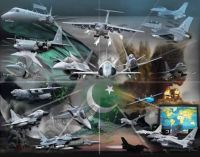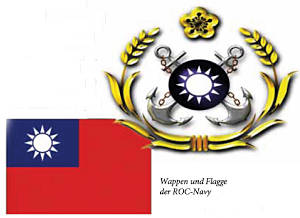This article is published with the kind permission of “Defence and Security Alert (DSA) Magazine” New Delhi-India
“It is my strong conviction that offensive application of airpower is what can yield positive results in a war.”
— Air Chief Marshal Mushaf Ali Mir, CAS, Pakistan Air Force, 2002.
A perceptive article on the modernisation and expansion of the Pakistan Air Force. The writer asserts that Pakistan Air Force is engaged in a massive modernisation since 1990. The current and future acquisitions of the PAF would enhance both the quality and quantity of equipment. Consistent demands for high technology weapons clearly indicate the modernisation of the Pakistan Air Force and Naval Air, has been given even higher priority over the Army and Navy which implies that they expect the Air Force to play a major role in any future conflict. Out of the total combat aircraft in 1990 just around 10 per cent were fourth generation. But by 2020 more than 90 per cent would be fourth generation aircraft in the PAF inventory. Besides the Pak Air Force has added the AWAC, BVR and Air to air refuelling capabilities to emerge as a truly modern air force.
 |
| Click to enlarge |
Pakistan has been on an arms acquisition spree to rapidly modernise its Air Force since Kargil war, accelerating the process during the last nine years. Significantly, Pakistan’s arms acquisitions since the Kargil War have been exclusively centered on modernisation and build-up of the Pakistan Air Force and aerial maritime strike capabilities of the Navy. This has to be viewed in the context of the reality that the Army in Pakistan, which has ruled the country for most of its existence and has been in direct control since 1999, calls the shots in military priorities and modernisation. As part of the Armed Forces Development Programme — AFFDP-2019 Pakistan has invested in the build-up of the Army, managed to expand the land equipment and has also initiated an infantry modernisation programme for it’s special, regular and paramilitary forces. But, the focus of Pakistan’s major defence procurements has been the build-up of the PAF and maritime strike capabilities of the Navy.
While China has been an all weather friend and Chinese imports have taken precedence in Pakistan’s import list in the last two decades, the United States became Pakistan’s major arms supplier since 9/11. Pakistan did manage to get more than US$ 20 billion of the US aid between 2002–2010. Future of the US aid and equipment, obviously remains uncertain due to the increasing mistrust between the two nations. The Obama administration has already declined the forthcoming aid of US$ 800 million this year. On the other hand, anti-American sentiments in Pakistan have risen and surprisingly, for the first time have surpassed anti-India sentiments.
Pakistan’s military capability and the military build-up have been primarily shaped by its relationship with the US and unstinted support from China. The last 60 years have seen fluctuations in Pakistan’s military capability development owing to Pakistan’s relationship with the United States. While the main suppliers to Pakistan have been the US and China, France and Turkey have been important partners in supporting PAF’s existing fleet of Mirages. To get an understanding of Pakistan’s military capability, it’s essential to look into the objectives behind the military build-up.
Basic objectives
Pakistan has looked at arms procurement to satisfy its security concerns. The perceived threat perception from India, strategic developments on the border with Afghanistan and the emerging technologies, have been the dominant factors contributing to the sources and kind of arms procurement by the military. The basic objectives shaping arms acquisitions of Pakistan have been as follows:
Firstly, Pakistan’s adversarial relationship with India has played a major role in formation of its threat perception. The dominant military lobby in Pakistan has aggressively propagated the Indian threat within Pakistan to legitimise Pakistan’s high defence spending and on the international front to support the acquisition of high technology weaponry. This also interacts with and promotes the military’s special and dominant role in the country’s power structure.
Secondly, Pakistan’s urge to match India’s conventional military superiority. This has perpetually driven Pakistan into ways and means to acquire superior technology. In 2006, the then Chief of Air Staff, Air Chief Marshal Kaleem Saadat stated in an interview to Jane’s Defence Weekly, “When US sanctions were imposed in 1990, both the PAF and the Indian Air Force were second-generation air forces. No real-time surveillance capability, no air-to-air refuelling capability, no airborne early warning capability, no beyond-visual-range-capability, no stand-off weapon capability. However, after 13 years of sanctions, India had all the above and Pakistan had none until about three or four years ago. This is the gap … We have to bridge this gap in the manner that we can deny the advantage that our neighbour has …”
The strategic aims, as outlined by Ross Masood Husain are: “to strengthen national power; to prevent open aggression by India; to induce India to modify its goals, strategies, tactics and operations; to attain a position of security or, if possible, dominance, which would enhance the role of other (non-military) means of conflict; to promote and capitalise on advances in technology in order to reach parity or superiority in military power.”
Thirdly, Pakistan’s reliance on high technology weapons to seek competitive military advantage. The desire to acquire high technology weapons has been very strong in the Pakistan military and its alliance with the US has assisted Pakistan to procure high technology equipment.

 von
von 


